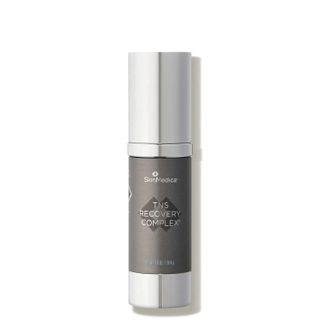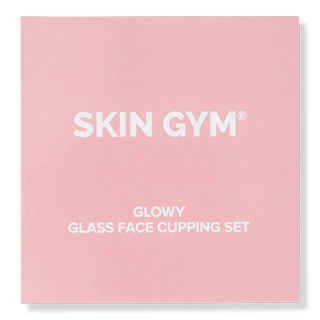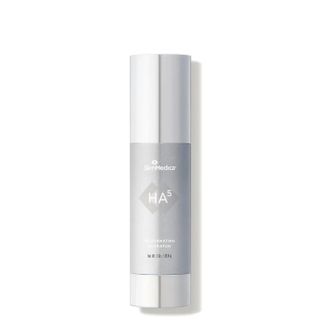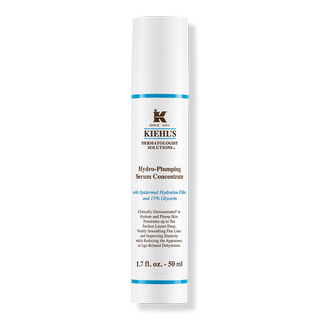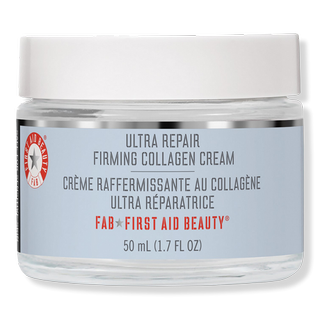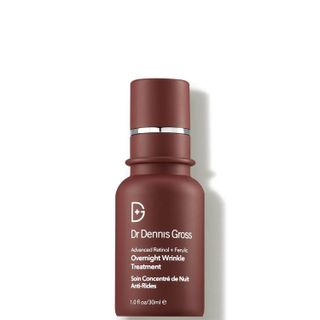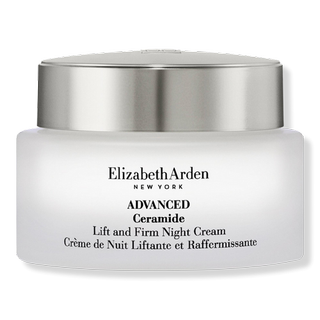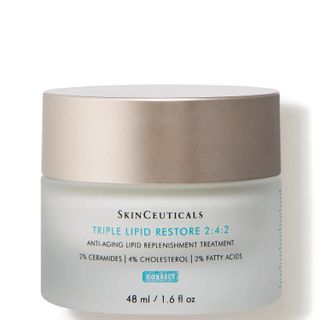We ID'd the Latest Injectable du Jour—Why Everyone's About to Be Asking for It
Over the past few years, injectable fillers have been gaining popularity. Many celebrities and influencers have admitted to getting lip filler and filler in other areas of their faces to plump and define. Last summer, I myself even dabbled in the world of hyaluronic acid filler and had some injected in my chin and cheeks to sculpt and enhance my features.
Just when I thought I knew everything there is to know about fillers, a new term started flooding my inbox. Enter biostimulatory filler, which is just as high-tech as it sounds. To learn more about the latest and greatest in filler technology, I reached out to top dermatologists. Keep reading to learn what exactly biostimulatory fillers are, how they work, and the potential benefits and drawbacks.
What is biostimulatory filler, and how is it different from other fillers?
First things first: Biostimulatory fillers aren’t actually fillers, at least in the traditional sense, according to Julie Russak of Russak Dermatology Clinic in New York City. Unlike hyaluronic acid fillers, these injectables aren’t made to plump up skin or mask volume loss—instead, they target deeper signs of aging like declining bone mass, skin sagging, and less elasticity.
As the name suggests, these fillers work to encourage cell regeneration. "When they’re injected close to the bone, they actually stimulate regeneration in those tissues, and when they’re injected close to fibroblasts, the cells in our body that produce collagen and elastin, they stimulate regeneration there,” says Russak. The two types in the U.S. right now are Sculptra, which increases energy production in cells, and Radiesse, which is essentially calcium that improves bone structure.
Who are biostimulatory fillers best for?
Since these fillers stimulate regeneration of tissues, they’re a great option for most people who are interested in trying an injectable. Anyone can use and benefit from biostimulatory filler. "We are not just masking the signs of aging anymore; we’re really moving on to the next step of regeneration,” says Russak.
If you’re looking for immediate, plumped-up results, you’d be better off opting for a hyaluronic acid filler. "[Biostimulatory filler] is more of a long-haul type of treatment that is a little bit more subtle,” says Sheila Farhang, cosmetic and Mohs skin cancer surgeon.
Are there any drawbacks to biostimulatory filler?
Don’t expect to see results right away. "There is no instant gratification with these fillers. It takes time for your body to produce molecules, to produce collagen, to produce elastin, so it takes time for results,” says Russak. "But on the positive side, the results are longer lasting, and they are natural because they are based on the regeneration of your own cells.”
It’s also worth keeping in mind that unlike their hyaluronic acid–based counterparts, these fillers aren’t dissolvable. If hyaluronic acid filler is injected badly or gets injected into a blood vessel, you’re able to get it dissolved. "If Sculptra or Radiesse is injected into a vessel, that technically cannot be dissolved away,” says Farhang. She notes that there’s less likelihood of this happening with a biostimulatory filler, particularly if your doctor uses a cannula instead of a needle. To be safe, you should always get biostimulatory fillers at the hands of a trained dermatologist.
How long do biostimulatory fillers last?
This varies from person to person, as everyone’s ability to regenerate is different. "Patients with a high metabolic potential will definitely respond better to biostimulatory molecules,” says Russak. "Patients whose metabolic rate is not at the optimal level will not regenerate as well. It also depends on how fast you’re breaking down your own tissue. How much resorption and breakdown happens in your body determines how well you will preserve and maintain the molecules that have been regenerated.”
As a general rule, the younger you are, the less often you’ll need biostimulatory fillers. "It’s now being recommended that people[in] their 30s start [using biostimulatory filler] as a maintenance [treatment] once or twice a year with very little bit,” says Farhang. As you start to mature, you’ll likely need more syringes, and you’ll need to go more often. You may need to go every six months until you get your desired results, and once you’re happy with the results, you’ll go yearly for maintenance.
Shop our favorite plumping skincare products:
Next, I Tried the Controversial Manicure Taking Over TikTok—My Nails Look Unreal
Katie Berohn is the associate beauty editor at Who What Wear. Previously, she worked as the beauty assistant for Good Housekeeping, Woman's Day, and Prevention magazines, all part of the Hearst Lifestyle Group. She graduated from the University of Colorado, Boulder, with a major in journalism and minor in technology, arts, and media, and earned her master's degree at NYU's graduate program for magazine journalism. In addition, Katie has held editorial internships at Denver Life magazine, Yoga Journal, and Cosmopolitan; a digital editorial internship at New York magazine's The Cut; a social good fellowship at Mashable; and a freelance role at HelloGiggles. When she's not obsessing over the latest skincare launch or continuing her journey to smell every perfume on the planet, Katie can be found taking a hot yoga class, trying everything on the menu at New York's newest restaurant, or hanging out at a trendy wine bar with her friends.
-
 If You Have a Damaged Skin Barrier, This Scandinavian Skincare Secret Can Help
If You Have a Damaged Skin Barrier, This Scandinavian Skincare Secret Can HelpIt protects the skin from oxidative stress.
By Kaitlyn McLintock
-
 Why Coenzyme Q10 Might Be the Sneaky Ingredient Your Skin Needs This Winter
Why Coenzyme Q10 Might Be the Sneaky Ingredient Your Skin Needs This WinterIt's so protective.
By Katie Berohn
-
 I'm a Beauty Editor—9 Products I Always Restock (and 3 I Retire) for Winter
I'm a Beauty Editor—9 Products I Always Restock (and 3 I Retire) for WinterIt's about time I switch things up.
By Valeriya Chupinina
-
 This TikTok-Viral Serum Gave My Ultra-Round Face Cheekbones for Days
This TikTok-Viral Serum Gave My Ultra-Round Face Cheekbones for DaysIt works wonders.
By Maya Thomas
-
 Retinol Alternatives Are Trending, But Are They Just as Effective? I Got Answers
Retinol Alternatives Are Trending, But Are They Just as Effective? I Got AnswersA dermatologist sounds off.
By Kaitlyn McLintock
-
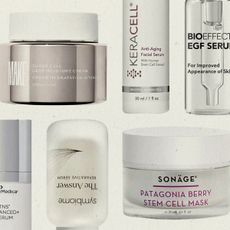 Stem Cell Beauty Products Made Me Nervous—I Asked Experts My Burning Questions
Stem Cell Beauty Products Made Me Nervous—I Asked Experts My Burning QuestionsThere's a lot to know.
By Marie Lodi
-
 Derms Say This Underrated Ingredient Is Like Hitting Undo on Hyperpigmentation
Derms Say This Underrated Ingredient Is Like Hitting Undo on HyperpigmentationDark spots don't stand a chance.
By Kaitlyn McLintock
-
 I Don't Mess Around When It Comes to Glowy Skin—5 Secrets I Swear By
I Don't Mess Around When It Comes to Glowy Skin—5 Secrets I Swear ByOne of the secrets is under $20.
By Grace O'Connell Joshua

